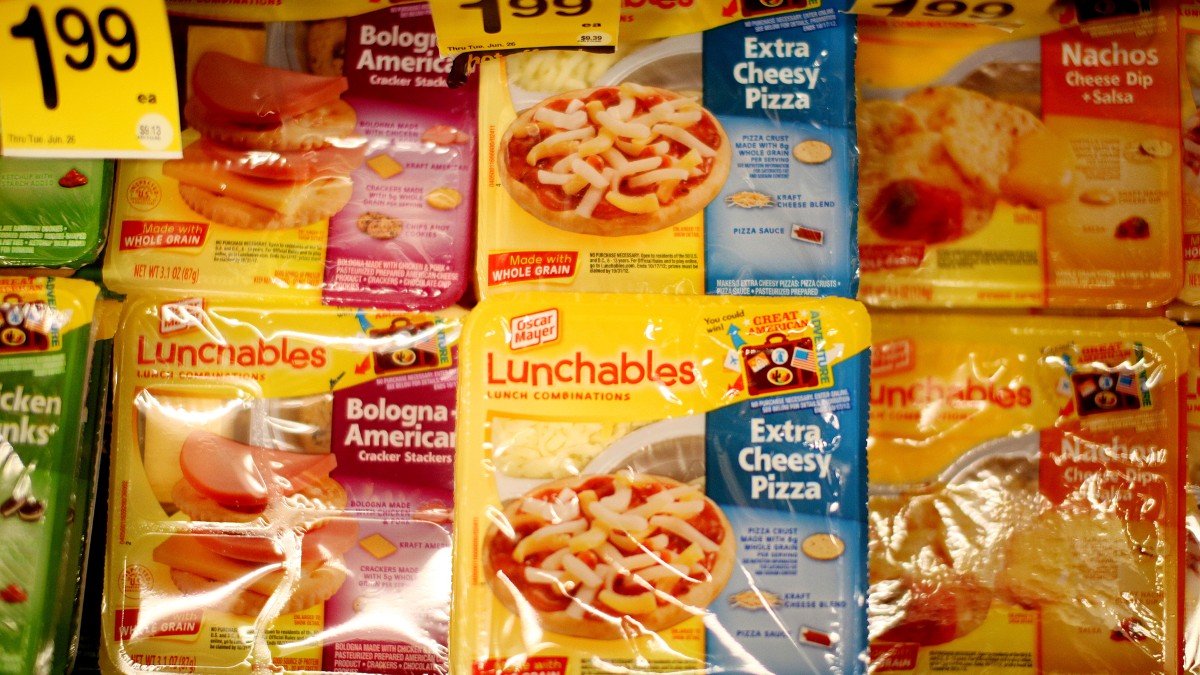Consumer Reports Finds High Levels of Lead and Sodium in Lunchables

Recently, reports broke alleging that Lunchables contain high levels of lead, leaving concerned parents and school officials with many questions about the safety of the popular lunch packs.
Lunchables have been around for decades, and many parents today can recall eating the packages themselves as children. They are a product of Kraft Heinz that began distributing across the United States in 1989. The products were introduced to make lunchtime easier for families who struggled to find time to shop for and pack school lunches, as well as because Kraft Heinz wanted to boost bologna sales. Lunchables became a popular choice as a ready-to-go package that parents could send their kids off to school with instead of having to buy and assemble all the ingredients.
Over the years, Lunchables have maintained their popularity for being quick, easy, and affordable. Not only did they give parents a break, but kids loved being able to assemble their own lunches, which were often more fun than a regular sandwich. Lunchables were nothing short of an enviable status symbol in 1990s school cafeterias.
However, concerns have surfaced over the years about how healthy these products are. Criticism has especially arisen over the lunches’ high sodium content, as well as how highly processed they are. For example, a simple block of cheese or turkey in a Lunchable comes with a startlingly long list of ingredients and chemicals to make them cheaper and last longer than real meat and cheese.
Still, countless Americans grew up eating Lunchables without adverse effects, so they’ve persisted. However, reports now suggest they may contain something more dangerous than sodium or processed meat.
Do Lunchables have lead in them?
Consumer Reports, a consumer watchdog group, recently tested Lunchables, and its findings were concerning. In a report titled “Should You Pack Lunchables for Your Kid’s School Lunch,” CR found high levels of lead and sodium in the popular product. The group tested a total of 12 lunch and snack kits from Lunchables purchased at a grocery store and measured their lead content based on California’s maximum allowable dose level (MADL). It used MADL due to the lack of federal limits on foods containing heavy metals. Meanwhile, it found that the popular Turkey and Cheddar Cracker Stacker kit would expose consumers to 74% or more of their daily maximum limit to lead.
Pizza with Pepperoni and Extra Cheesy Pizza Lunchables expose consumers to 73% and 69%, respectively, of their MADL. Additionally, the packages each contained a quarter to half of a child’s recommended daily limit for sodium. The group also discovered both lead and cadmium in the kits. Now, one may point out that the meals’ lead content does not exceed the best protective measurement, MADL, available. However, one must remember that these lunches contain few nutrients. For most children, the kits will account for just 15% of their daily calorie intake but up to 75% of their maximum daily dose of lead. If they consume other products with lead or are exposed to the element in other ways, they can easily exceed the maximum dose and enter into danger zones of exposure.
The goal shouldn’t be just to stay within the MADL but to avoid as much lead exposure as possible for fear of adverse effects. When Consumer Reports reached out to Kraft Heinz, the company stated, “All our foods meet strict safety standards. Lead and cadmium occur naturally in the environment and may be present in low levels in food products.” While it’s true that trace amounts of lead can often be found in the environment and food products, the reports suggest Lunchables have a higher amount than is typical, especially considering there’s really no such thing as a “safe level” of lead for children to consume.
Lead poisoning symptoms
Anyone uncertain about how to interpret Consumer Reports’ results should be aware that lead poisoning does exist. Concern over lead poisoning is easy to dismiss because it won’t happen when eating a single Lunchable. The poisoning occurs when the body builds up high levels of lead over the course of months or even years. Children are also far more susceptible to lead poisoning than adults, and their symptoms can sometimes be difficult to detect. According to Mayo Clinic, symptoms can include developmental delays, learning difficulties, stomach pain, loss of appetite, and weight loss. Other severe symptoms include sluggishness, vomiting, constipation, hearing loss, and seizures.
In the most severe cases, lead poisoning can be fatal. Although it can be treated, the damage from lead poisoning is often irreversible. Again, a child may not get lead poisoning from Lunchables, but one must remember the lunch kit will be far from their only exposure to lead in a given day. Lead is prominent in the environment and many products, raising the risk of children being exposed to a dangerous amount between Lunchables and other products.
(featured image: Sandy Huffaker / Getty)
Have a tip we should know? [email protected]